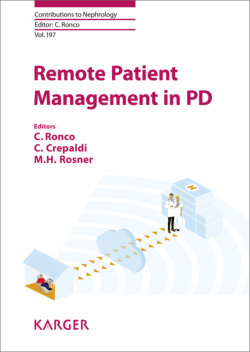Читать книгу Remote Patient Management in Peritoneal Dialysis - Группа авторов - Страница 11
На сайте Литреса книга снята с продажи.
The Peritoneal Membrane/Cavity as a Therapeutic Tool
ОглавлениеRene Dutrochet was the first to describe the process of osmosis in the 18th century. This was later followed by Thomas Graham’s (19th century) description of the difference between “crystalloids” and “colloids” in his “Bakerian lecture on osmotic forces” [1, 2]. In the late 19th century, Clark, Orlo and Wegner demonstrated that the instillation of hypertonic solution (salt, concentrated sugars, glycerol) in the peritoneal cavity increases the peritoneal cavity volume in animal experiments [3]. The evidence for “bi-directional permeability” (blood to peritoneal cavity and vice-versa) of the peritoneal membrane was provided later by Babb et al. [4]. Based on the transport behavior of solutes like methylene blue, Putnam’s description of the peritoneum as a membrane with “punched out holes” that allowed larger molecules (now interpreted as middle molecules) to pass through, later helped in the understanding of the mechanism of large solute removal by PD [3]. Advances in cell biology and advent of electron microscopy subsequently led to the emergence of the 3-pore theory; including the recognition of the role of aquaporins [5]. Interestingly, the prediction that the water transport across the peritoneal membrane occurred via transcellular pathways had already been made earlier [6].
